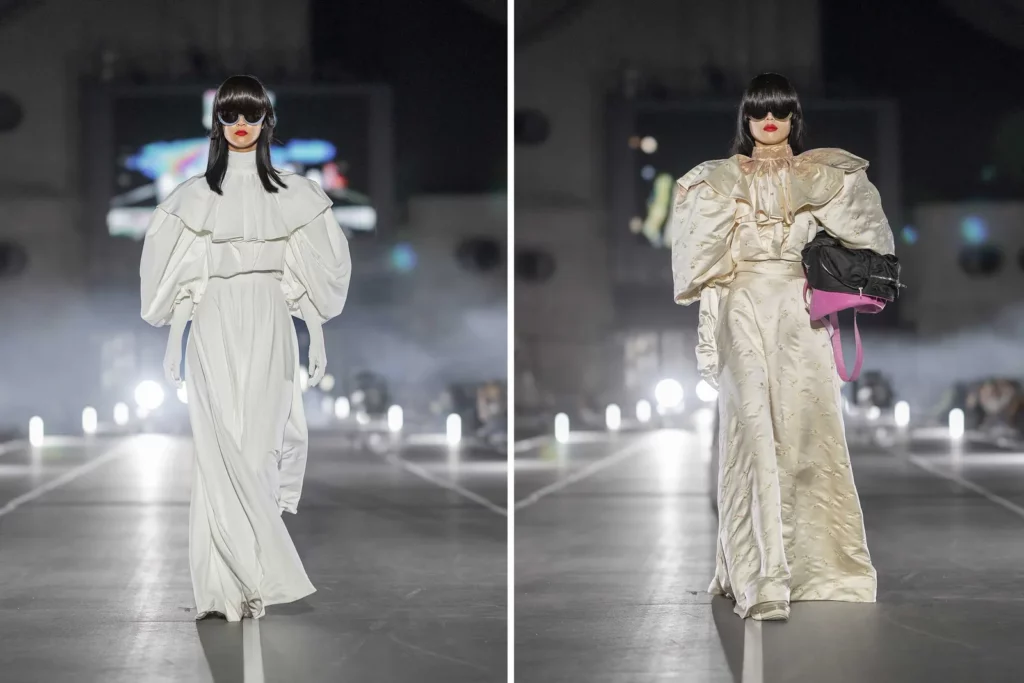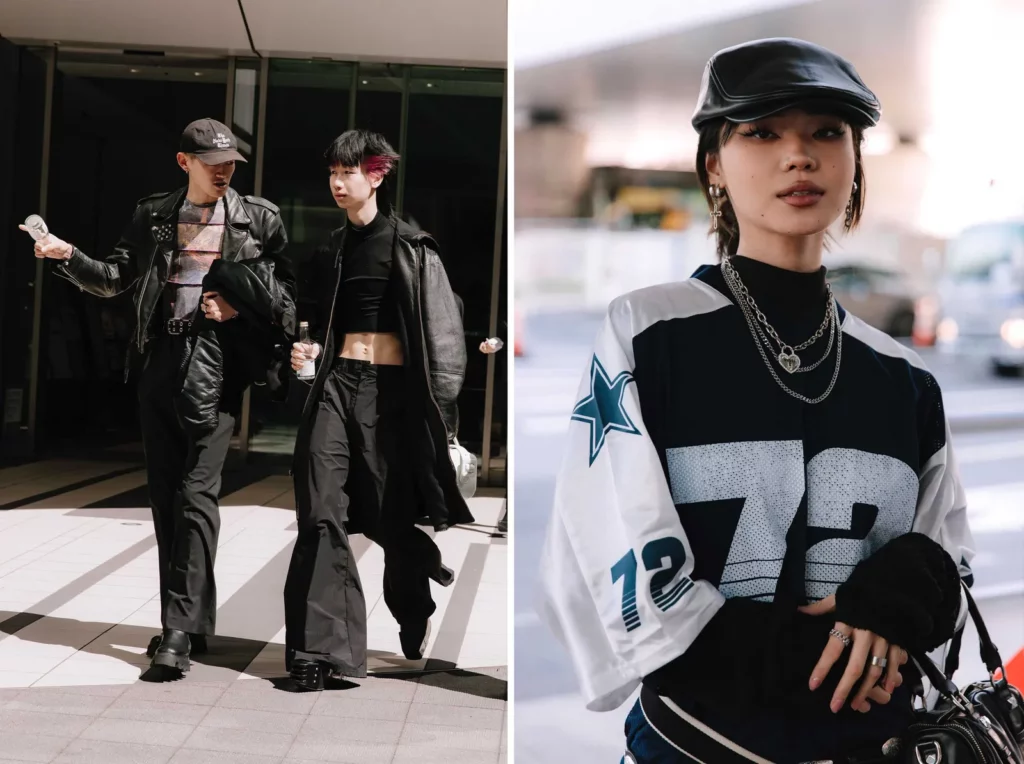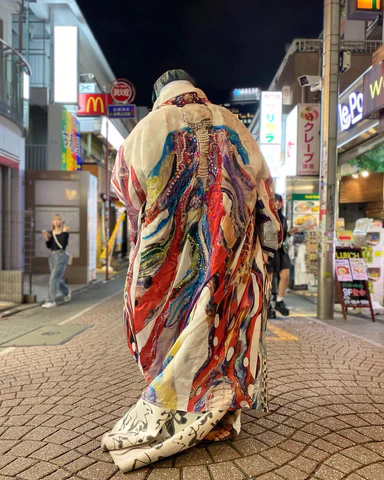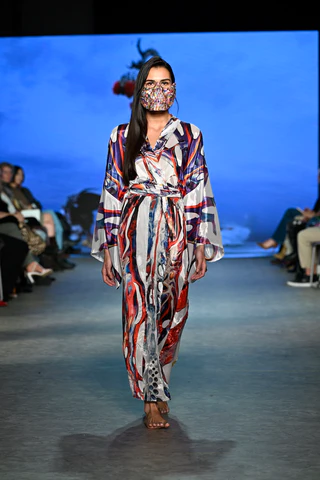Japan Fashion Week or, Rakuten Fashion Week Tokyo (RFWT), recently concluded with a flourish, marking a significant moment for Japan’s fashion industry. Among the highlights was Anrealage’s debut of its menswear brand, Anrealage Homme, captivating audiences at the Telecom Center Building in Tokyo Bay. Designer Kunihiko Morinaga’s deliberate choice to unveil the collection in Tokyo underscores the city’s growing prominence as a fashion hub.
This season’s RFWT showcased a renewed sense of vigor, signaling Tokyo’s resurgence in the global fashion arena. Overcoming the challenges posed by pandemic disruptions, organizers reimagined the event, curating a more refined selection of designers and enhancing the overall experience for attendees.

Mikio Sakabe AW24. Photos: Justin Shin/Getty Images

Tokyo Fashion Week street style. Photos: Momo Angela
A notable shift was the consolidation of the schedule, with a focus on established designers. This strategic move led to a more cohesive and impactful showcase of Japan’s design talent, drawing praise from industry insiders and buyers alike. Additionally, innovative show formats and unique venue selections injected fresh energy into the event, further solidifying Tokyo’s reputation for creativity and ingenuity.
However, amidst the celebration of tradition and craftsmanship, there’s a growing recognition of the role digital fashion can play in shaping the industry’s future. As Tokyo Fashion Week evolves, embracing digital innovation becomes increasingly vital to maintaining momentum and relevance on the global stage.
Digital fashion offers a transformative approach to creativity and sustainability, aligning with Tokyo’s commitment to innovation. By integrating digital elements into their collections, designers can transcend physical limitations and reach a wider audience, while reducing environmental impact.
For example, Kanji Kyoda, a Japanese Fashion Designer that draws inspiration from traditional Japanese attire, beautiful female characters, and video games, pursuing a unique fashion expression based on these motifs. Here is an example of digital work:
This is his finished work:
Kanji drew inspiration from these works along with 3D Design Software from TG3D Studio to showcase his digital creations.


You can learn more by visiting his Instagram at @deforum_fashion_kanjikyoda and even get this design for yourself here.
Furthermore, Tokyo’s fashion scene stands to benefit from the democratizing effect of digital fashion, fostering inclusivity and accessibility. Through virtual platforms and augmented reality experiences, consumers can engage with fashion in new and immersive ways, enhancing the storytelling and brand experience.
Additionally, the global digital clothing market has seen substantial growth, valued at $498.7 million in 2021 and projected to reach $4.8 billion by 2031. This significant expansion mirrors the increasing digitalization and demand for sustainability within the fashion industry. As technology advances and consumers prioritize eco-friendly practices, digital clothing offers a promising solution. Its potential to reduce waste and carbon footprint aligns with evolving consumer values, driving its exponential growth in the years to come.
While Tokyo faces challenges in maintaining consistency and financial viability, strategic initiatives aimed at supporting designers, coupled with the presence of international attendees, indicate a bright future for Rakuten Fashion Week Tokyo (RFWT).
In conclusion, Tokyo’s fashion renaissance is characterized by a harmonious blend of tradition and innovation. By embracing digital fashion and staying true to its creative roots, Tokyo is poised to reclaim its status as a leading force in the global fashion landscape. As the city continues to evolve, one thing is clear: the future of Tokyo fashion is bright, bridging the past with the limitless possibilities of the digital age.
